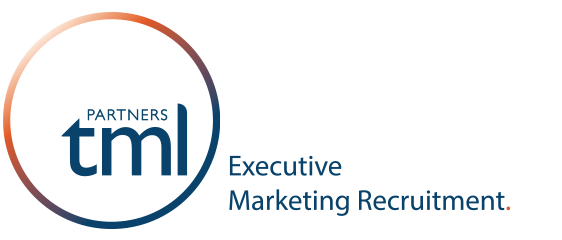The proliferation of technology has affected marketing in every area and there is no shortage of articles covering the impact and benefits of these changes. Internal communications, however, is an area that takes up less bandwidth, but has been quietly on the rise in both sophistication and on the strategic agenda. We are increasingly recruiting specialist internal communications professionals not just into the larger organisations, but into medium-sized and smaller businesses who are also seeing the benefits of strategic focus in this area. The B2B world is understanding that their employees are their primary brand champions, and is devising interesting and innovative methods of leveraging the marketing power of their workforce. In this article we examine how internal communications roles have changed, and what has been the cause of this.
How has internal communications evolved?
Technology is, as expected, a primary driver of change in this area of marketing. Certainly, there are far more tools available to facilitate internal communications and reach employees, but we’ll come onto this later in the article. Companies are now far less able to control the narrative around their organisation to the public through traditional marketing channels such as advertising and direct marketing. Social media, online forums, review sites, just to name a few, have exponentially increased (and sped up) the ways in which customers learn about a business. It’s partly the responsibility of the reputation management team to try to control the narrative, which we covered in a previous report. However, as mentioned, your employees are your most powerful brand ambassadors, so your internal communications are also pivotal here. Beyond simply being client-facing, your employees also put out information about your organisation through, for example, their own social media accounts. Internal communications strategies need to account for this and make sure as best as they can that the information being relayed is in line with the company’s own marketing messages.
Beth Carter, Global Senior Internal Communications Manager at Ashurst, spoke to us on this topic. “Most employees don’t have access to the same breadth of information as an internal communications professional – which means the content they’re sharing doesn’t necessarily give the whole picture. So, it’s important that internal communications teams provide staff with an understanding of the broader organisation, and that knowledge can then be shared externally as well.”
There is also a shift in the way that companies behave within the communities they operate. Within any evolved employer brand there will be a focus on social purpose. That is, how that business positively impacts on its employees, and the community and world around it. ‘Purpose’ has become a buzz word for organisations – the key is to be genuine. Savvy employees and customers will see through a CSR policy that is for show rather than for the greater good and this will quickly impact negatively. Done right, having a clear purpose and demonstrating social good-standing are very powerful tools which your employees can get behind. Increasingly, we’re seeing internal communications professionals work with CSR teams to build strategies that engage their employees for the benefit of the business.
On a more practical note, the way in which people work is also changing. Organisations have far more disparate workforces with the rise of flexible working. Not having everyone under one roof, as would have traditionally been the case, adds an extra challenge for internal communications. How do you keep employees connected, both to each other and the organisation?
Strategy
With all this change, organisations now need a far more sophisticated internal communications strategy. The time invested in, and the intricacy of, external communications strategies need to be mirrored internally, and that is why we’re seeing more senior internal communications professionals being sought than ever before.
The most successful strategies are built from both the top down and the bottom up. Buy in at senior level is essential. Business leaders need to show that they are engaged, that they care and that they’re working towards the same goals as their employees. However, focusing only top down can have a polarising effect. Making sure every employee has a voice is the way to harness engagement, you need champions at every level so that your strategy is relevant to all and enables you to empower your employees.
As with external communications, you need to build a clear narrative. That might be around your organisation’s purpose, your vision and values, your people or your product, but whatever the narrative is, make it clear and consistent, and reinforce it in everything that your firm does.
Openness is a value that employees really engage with. Making business goals and financial performance clear builds a level of trust internally and adds to the feeling of a common goal at all levels.
“For many leaders, this openness and transparency can be challenging, but employees respond to authenticity. ‘Spin’ doesn’t cut it if you want your people to be engaged with their work. We need to be transparent both with what we know, and with what we don’t yet know” comments Beth Carter.
Now on to the actual communications, clearly the most important part of the strategy. Again, the communications that are sent out internally need to be as carefully planned as your external communications. They need to be targeted – just because it’s internal doesn’t mean it’s one size fits all. Different groups of employees have different requirements, and this needs to be acknowledged. Maintain regularity and use different channels to reach your employees. Have clear messaging in communications and as with all marketing, do everything you can to try to make it two way.
What are the tools impacting strategy?
An intranet is usually the central point of an internal communications strategy, much like a website is that of an external strategy. An intranet can be a very powerful tool in both disseminating and storing useful information to employees, but also starting a conversation. It’s important to realise that the intranet is not where communications start and finish, there are so many other tools available to support this central hub and make it engaging and successful.
Tools that promote internal chat are very powerful. Slack, for example, allows employees to have conversations in groups or privately on one platform. Slack was launched five years ago and has seen huge success, announcing revenue in excess of $400 million in 2019. Organisations which successfully implement this sort of communication tool open up so many great opportunities for their employees to stay connected, share information and feel very much part of the organisation, wherever they are.
Creating forums within an intranet is another way of doing this. It promotes a two-way approach to sharing information, rather than just treating your intranet as a repository for useful documents.
More sophisticated internal communications strategies are embracing automation to get regular communications out to employees. Internal communications should be multi-platform and automation software successfully assists in managing this.
Multi-platform strategies should also include different media types. In addition to text-based communications, the introduction of videos and podcasts, and dedicated employee social media platforms all contribute to engagement.
With all of the technology available, traditional face-to-face communication shouldn’t be neglected. Employee events, both social and educational, should always form part of the strategy.
“We’ve spent a lot of time focussing on having the best intranets, internal social media networks, perfect newsletter formatting – so much so that we think having high quality tools is the same as having good communication. But when I speak to colleagues and ask their preferred means of hearing news, they invariably say ‘from my manager’. Our focus, first and foremost, needs to be on discussion and conversation between people – the tools provide a platform that supports that” comments Beth Carter.
Finally, the on-boarding process for new employees is the first touch-point for internal communications. Training in the tools available for employees to interact is just as important as training in the day-to-day work systems.
Skillset of internal communications professionals
To conclude, with all this change in the profession, it goes without saying that the skillset that our clients are looking for when hiring an internal communications professional has evolved. Strategic focus is pivotal, and it’s now not uncommon for external comms professionals to transfer to internal, and vice versa. The skillset needed is very similar. Sometimes, the commercial focus of an external comms professional can really bring impetus to an internal strategy. And likewise, a strong client focus, which makes external communications successful, links in with a strong employee focus making the internal role successful.
Tom Morgan-Harris is an Associate Director at tml Partners and takes a lead role in senior appointments across communications, for more information please reach out to us at tmlpartners.com




